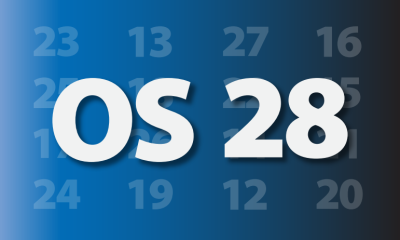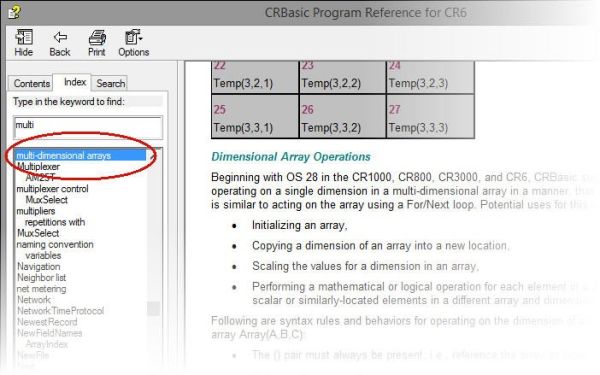4 New Ways to Use Array Notation: Simple Scaling
por Janet Albers | Actualizado: 05/29/2015 | Comentarios: 0

The newest operating system released by Campbell Scientific for its data loggers is OS 28 for the CR800, CR1000, and CR3000. (The comparable operating system version for the CR6 datalogger is OS 01.) This powerful data logger OS has been enhanced so that you can use Array Notation in CRBasic multi-dimensional arrays in new ways. This article explores one of these methods—simple scaling. Three other methods (initializing multi-dimensional arrays, complex scaling, and copying or transposing) will be discussed in articles to follow.
Using the new operating system, you can now scale values in an array without the use of a For/Next loop.
For example:
Public TempC(2), TempF(2) Public PTemp BeginProg Scan (1,Sec,0,0) PanelTemp (PTemp,250) TCDiff (TempC(),2,mV2_5C,1,TypeT,PTemp,True ,0,250,1.0,0) 'simple scaling TempF()=TempC()*1.8+32 'convert all TempC variables to TempF NextScan EndProg
Note: This new syntax does not affect how repetitions within instructions write to, or read from, variable arrays. To see how to use array notation and repetitions within measurement instructions, watch the "CRBasic | Advanced Programming" video.
Tip: After updating your operating system, it’s a good idea to check your existing programs to ensure they continue to run as expected.
For more information about, and examples of, multi-dimensional arrays, we have several resources to help you. You can search for the section in your data logger manual titled "Array-Assigned Expression." The CRBasic Editor Help application in LoggerNet is also a good resource. For example, search for "multi-dimensional arrays':

|
Recommended for You: To learn more about OS 28, review the “Powerful New Operating System for CR800, CR1000, CR3000" newsletter article. |
Simple scaling is one of the new ways to use Array Notation in CRBasic multi-dimensional arrays, without needing to use a For/Next loop. Three additional articles will discuss other new ways: initializing multi-dimensional arrays, complex scaling, and copying or transposing.
Do you have comments or questions? Feel free to share them.




 Janet Albers, now retired, was a Senior Technical Writer. She enjoyed sharing tips, simplifying concepts, and guiding our clients to a successful project. She had been with Campbell Scientific, Inc. longer than the CR1000, but not quite as long as the CR10X. After work hours, Janet enjoyed the outdoors with her boys and dogs.
Janet Albers, now retired, was a Senior Technical Writer. She enjoyed sharing tips, simplifying concepts, and guiding our clients to a successful project. She had been with Campbell Scientific, Inc. longer than the CR1000, but not quite as long as the CR10X. After work hours, Janet enjoyed the outdoors with her boys and dogs.
Comentarios
Please log in or register to comment.